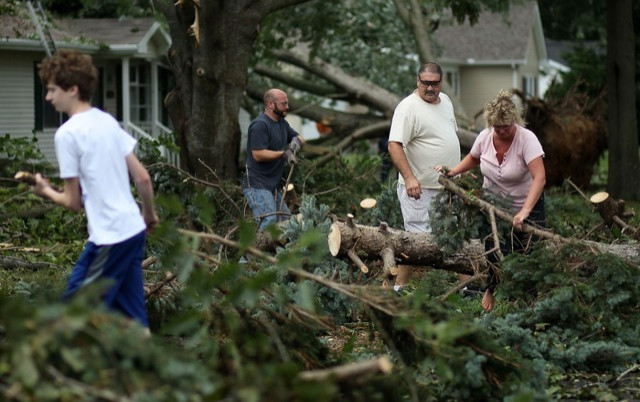Hurricane Irene: Delaware Spared Severe Damage As Cleanup Begins

Delaware was largely spared the kind of damage from Hurricane Irene that many had forecast, yet the state suffered heavy flooding from torrential rains, while about 55,000 people lost electric power and about 100,000 were evacuated from shore communities and low-lying plains.
Dozens of homes in the Diamond State were damaged or destroyed by fierce winds; while many roads remain impassable due to fallen tree limbs and power lines.
Floods stranded dozens of motorists, particularly in northern New Castle County, where a number of creeks overflowed.
At least 50 buildings were destroyed in Sussex County, the most southern of Delaware’s three counties.
Hundreds of people huddled in shelters around the state, while hundreds, perhaps thousands more, witnessed flooding in their basements.
The eye of Irene got as close to about 10 miles east of Fenwick Island on Delaware’s extreme southeastern corner, but the storm never quite reached hurricane levels.
Before Irene arrived, forecasters warned of winds of up to 110 mph, hammering coastal areas like Rehoboth Beach. However, the National Weather Service reported that the highest wind gusts recorded was about 66mph near Lewes, eight short of official hurricane strength.
Some residents felt the evacuation order was excessive.
Dave Rehkamp of Broadkill Beach, north of Lewes, told the Wilmington News-Journal newspaper: You can second-guess anything you want. For me, it was too much. I've been down here for nor'easters that are worse.
State officials said precautions had to been taken even if the storm turned out to be less damaging than originally predicted.
Delaware Governor Jack Markell, who initially ordered the evacuations, said at a press briefing: I'm very comfortable with the decision that we made. Obviously, you make decisions on the information available to you at the time.
Markell has since largely lifted the travel bans he earlier ordered across the state. Bridges have also been re-opened.
David A. Robinson, a New Jersey-based climatologist, said Delaware was spared worse damage because of the route Irene took.
First of all, hurricane winds are stronger over the ocean; once you get anywhere near or on land, you have frictional effects from trees and buildings and hills which greatly diminish wind speed, Robinson told the News-Journal.
”And the strongest wind speeds tend to be on the eastern side, and the eastern side stayed off Delaware's coast.
On Saturday night, the Federal Emergency Management Agency approved federal assistance for Delaware, while the Delaware National Guard activated 1,500 troops to help out with the clean-up effort.
Meanwhile, police in New Castle County are searching for two men who were reported missing late Saturday night in the area of Hockessin, a suburb north of Newark. They were reportedly walking outside during the height of the storm.
© Copyright IBTimes 2024. All rights reserved.




















